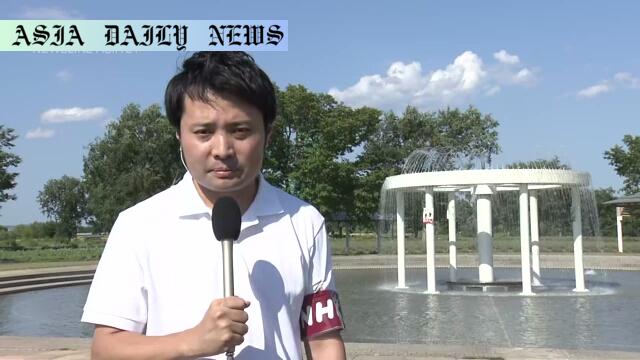Hokkaido: Exploring how residents are coping with extraordinary heat conditions amidst Japan’s extreme climate changes.

Introduction: The Unprecedented Heatwave in Hokkaido
Hokkaido, Japan’s northernmost island, is traditionally known for its cooler climates, especially during summer months. However, recent weeks have presented a stark deviation from this familiar pattern, with record-high temperatures gripping the region. The extraordinary heat has left residents grappling with a reality that is as sudden as it is concerning.
Such unusual weather patterns resonate as part of a larger narrative around climate change affecting even the most unsusceptible regions. This article will delve into the impacts this heatwave has had on the people of Hokkaido, their coping mechanisms, and what this spells for the future given the global climatic shifts taking place.
The Effects of Extreme Heat on Local Communities
For many in Hokkaido, the oppressive heat has disrupted the usual rhythm of life. Businesses need to adapt quickly, offering solutions to ensure customer and worker safety. Schools have had to reverse plans by suspending outdoor activities, and agricultural sectors are on high alert as crops face dehydration risks. Shortages of energy resources for maintaining cooling systems have further stressed systems across the board.
Thousands of residents have turned to cooling shelters, public buildings retrofitted with air systems for emergencies. Yet, challenges persist. Many homes in Hokkaido are not designed for heat insulation as they’re generally tailored for the colder seasons, leaving families vulnerable to indoor heat surges.
How Residents Are Coping Amidst the Blaze
Amid these challenges, resilience shines through the fabric of Hokkaido communities. Social campaigns encouraging hydration and rest periods have become vital city interventions. Small shops have started offering cooling items such as hand fans, personal cooling devices, and electrolyte-packed drinks. Citizens have creatively modified their activities to align with mornings and evenings when the temperature dips slightly, minimizing mid-day heat exposure.
Moreover, the health sector has stepped in robustly to cope with rising cases of heatstroke, ensuring awareness and quick interventions remain pillars of public health defense measures.
Understanding the Bigger Picture: Climate Implications
For many living through the Hokkaido heatwave, questions are swirling about the implications of this sudden weather shift. Recent scientific findings have increasingly tied anomalous heat events to widespread climate changes accelerated by human enterprises. Experts underscore the pressing need to recalibrate urban planning, improve energy efficiency, and transition toward renewable solutions for sustaining livable environments.
The heat in Hokkaido may serve as a reminder that nowhere on Earth is truly insulated from climate repercussions. Urgent measures and coordinated efforts between governments, businesses, and communities are paramount to mitigate further impacts.
Conclusion: Hope Amid Challenges
While the Hokkaido heatwave underscores the grave risks posed by rising global temperatures, it also showcases the strength communities can wield when facing ecological adversity. By harnessing innovative solutions, fostering cooperation, and maintaining a resilient outlook, inhabitants of Hokkaido offer a blueprint for navigating such trials globally.
Commentary
A Reflection on Hokkaido’s Struggles
As we witness the gripping heatwave engulfing Hokkaido, it offers lessons not just about survival but about the global state of climate consciousness. Typically renowned for its milder weather, Hokkaido’s sudden shift to extreme temperatures feels almost surreal. It is a wake-up call for regions previously thought insulated from climatic extremes.
Human Resilience and Adaptation
One of the most admirable aspects of this situation is the resilience displayed by the residents of Hokkaido. Watching how quickly communities band together to safeguard one another—be it through municipal cooling centers or health campaigns—is truly inspiring. It reaffirms the ability of human societies to find pragmatic solutions during adversity. Yet, as positive as this is, reactive solutions can only carry communities so far. Long-term preventative measures are equally, if not more, critical.
The Call to Global Action
Hokkaido’s plight underscores the urgency of escalating conversations surrounding climate responsibility. This isn’t just an issue of one region adjusting to an anomaly; it’s a clarion call for policymakers and global leaders to align their agendas toward sustainability. From rethinking agricultural methodologies to fortifying homes against erratic weather, comprehensive systemic action is needed across every sector.
Hokkaido’s story isn’t just theirs—it’s a shared glimpse into what many face or will face eventually. It’s up to us collectively to ensure that lessons learned here serve as preventative paradigms for regions worldwide.


